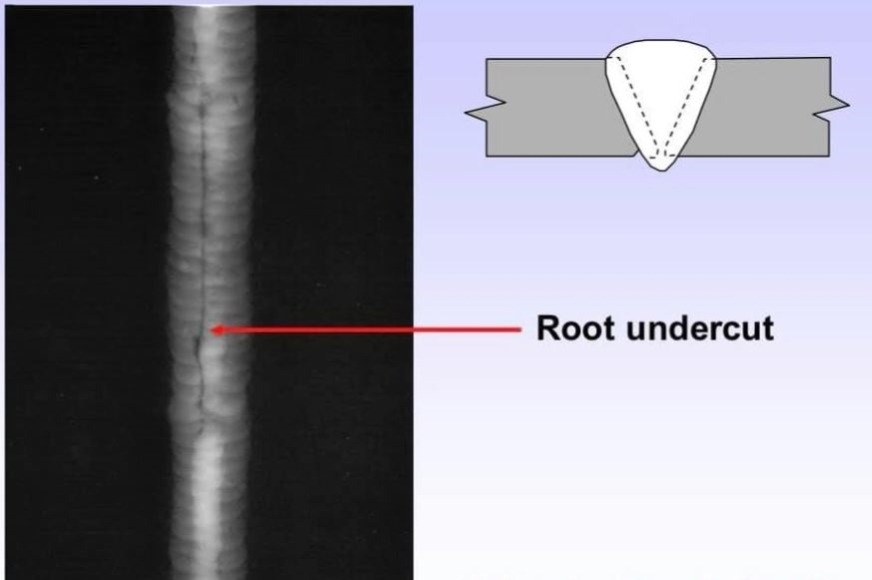Finest Practices for Preventing Weld Undercut: Mastering the Fundamentals
Mastering the Art of Welding: Just How to Prevent Undercut Welding Issues for Flawless Construction Results
Effectiveness and precision are paramount in the globe of welding, where even the tiniest flaw can compromise the architectural honesty of a produced item. One typical obstacle that welders face is undercutting, a problem that can compromise a weld joint and lead to pricey rework. By recognizing the origin creates of undercut welding and executing efficient techniques to stop it, welders can elevate their craft to brand-new levels of quality (Preventing weld undercut). In the pursuit of perfect construction results, mastering the art of welding to avoid undercut problems is not just an ability but a necessity for those pursuing excellence in their work.
Comprehending Undercut Welding
To avoid undercut welding, welders ought to make sure appropriate welding specifications, such as changing the present, voltage, traveling speed, and preserving the appropriate electrode angle. By comprehending the causes of undercut welding and executing precautionary steps, welders can accomplish premium, structurally sound welds.
Reasons For Undercut in Welding
Recognizing the variables that add to damage in welding is vital for welders to create top notch, structurally sound welds. Undercutting occurs when the weld steel does not effectively load the groove developed between the base metal and the formerly transferred weld metal. Numerous elements can result in damage in welding. One typical cause is too much warm input. Welding at heats for extended durations can lead to the base steel thawing more than wanted, causing undercut. Poor welding wrong or present welding speed can additionally contribute to damage. Inadequate current may not give sufficient heat to thaw the base and filler metals sufficiently, while extreme rate can avoid correct combination, causing undercut. In addition, incorrect electrode angles or inaccurate lantern adjustment strategies can develop locations of reduced weld steel deposition, advertising undercut. Recognizing these causes and carrying out proper welding strategies can help stop damaging problems, ensuring sturdy and strong welds.
Techniques to Avoid Undercutting

To mitigate the threat of damaging in welding, welders can use strategic welding methods aimed at enhancing the quality and integrity of the weld joints. In addition, making use of the right welding method for the particular joint configuration, such as weave or stringer grains, can add to decreasing undercutting.
Furthermore, correct joint prep work, including ensuring tidy base materials without contaminants and making use of the proper welding consumables, is important in avoiding undercut defects. Using back-step welding methods and controlling the weld grain profile can additionally assist distribute warm evenly and minimize the danger of undercut. Regular examination of the weld joint during and after welding, as well as carrying out quality control steps, can assist in identifying and dealing with undercutting problems promptly. By carrying out these techniques carefully, welders can achieve perfect fabrication results with very little undercut defects.
Value of Correct Welding Criteria
Selecting and maintaining proper welding criteria is important for achieving successful welds with minimal problems. Welding criteria refer to variables such as voltage, present, travel rate, electrode angle, and shielding gas flow price that straight influence the welding procedure. These parameters must be very carefully changed based upon the sort of product being bonded, its density, and the welding strategy used.
Correct welding parameters ensure the right amount of warmth is put on thaw the base metals and filler product evenly. If the criteria are set expensive, it can bring about too much warmth input, causing spatter, burn-through, or distortion. On the various other hand, if the criteria are as well low, incomplete fusion, absence of infiltration, or damaging may occur.
Quality Guarantee in Welding Workflow

Verdict
Finally, grasping the art of welding requires an extensive understanding of undercut welding, its causes, and strategies to stop it. By guaranteeing proper welding criteria and executing quality control practices, remarkable construction outcomes can be accomplished. It is important for welders to continually pursue excellence in their welding procedures to prevent undercut concerns and create high-quality welds.
Undercut welding, an usual defect in welding procedures, occurs when the weld steel does not correctly fill the groove and leaves a groove or anxiety along the bonded joint.To avoid undercut welding, welders need to make certain proper welding specifications, such as changing the present, voltage, traveling speed, and maintaining the appropriate electrode angle. Poor welding incorrect or present welding speed can likewise add to undercut.To reduce the threat of damaging in welding, welders can employ calculated here are the findings welding strategies aimed at improving the high quality and honesty of the weld joints.In conclusion, grasping the art of welding needs a thorough understanding of undercut welding, its causes, and Visit Website methods to stop it.